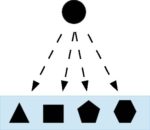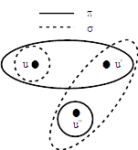Click here to download the slides.
A Basic Duality in the Exact Sciences: Application to QM
This approach to interpreting quantum mechanics is not another jury-rigged or ad-hoc attempt at the interpretation of quantum mechanics but is a natural application of the fundamental duality running throughout the exact sciences.
A Pedagogical Model of Quantum Mechanics Over Sets
The new approach to quantum mechanics (QM) is that the mathematics of QM is the linearization of the mathematics of partitions (or equivalence relations) on a set. This paper develops those ideas using vector spaces over the field Z2 = {0.1} as a pedagogical or toy model of (finite-dimensional, non-relativistic) QM.
New Logic & New Approach to QM
The new logic of partitions is dual to the usual Boolean logic of subsets (usually presented only in the special case of the logic of propositions) in the sense that partitions and subsets are category-theoretic duals. The new information measure of logical entropy is the normalized quantitative version of partitions. The new approach to interpreting quantum mechanics (QM) is showing that the mathematics (not the physics) of QM is the linearized Hilbert space version of the mathematics of partitions. Or, putting it the other way around, the math of partitions is a skeletal version of the math of QM.
The new partitional approach to (literally) interpreting quantum mechanics
This paper presents a new `partitional’ approach to understanding or interpreting standard quantum mechanics (QM). The thesis is that the mathematics (not the physics) of QM is the Hilbert space version of the math of partitions on a set and, conversely, the math of partitions is a skeletonized set level version of the math of QM.
“Follow the Math” Preprint
The slogan “Follow the money” means that finding the source of an organization’s or person’s money may reveal their true nature. In a similar sense, we use the slogan “Follow the math!” to mean that finding “where the mathematics of QM comes from” reveals a good deal about the key concepts and machinery of the theory.
The Logical Theory of Canonical Maps
The purpose of this paper is to show that the dual notions of elements & distinctions are the basic analytical concepts needed to unpack and analyze morphisms, duality, and universal constructions in the Sets, the category of sets and functions.
Negation and Implication in Partition Logic
Our purpose in this paper is to explore the notions of negation and implication in that other mathematical logic of partitions.
Extending All Boolean Operations to Partitions
The lattice operations of join and meet were defined for set partitions in the nineteenth century, but no new logical operations on partitions were defined and studied during the twentieth century. Yet there is a simple and natural graph-theoretic method presented here to define any n-ary Boolean operation on partitions. An equivalent closure-theoretic method is […]
New Light on the Objective Indefiniteness or Literal Interpretation of QM
This paper shows how the mathematics of QM is the math of indefiniteness and thus, literally and realistically interpreted, it describes an objectively indefinite reality at the quantum level. In particular, the mathematics of wave propagation is shown to also be the math of the evolution of indefinite states that does not change the degree of indistinctness between states. This corrects the historical wrong turn of seeing QM as “wave mechanics” rather than the mechanics of particles with indefinite/definite properties.




